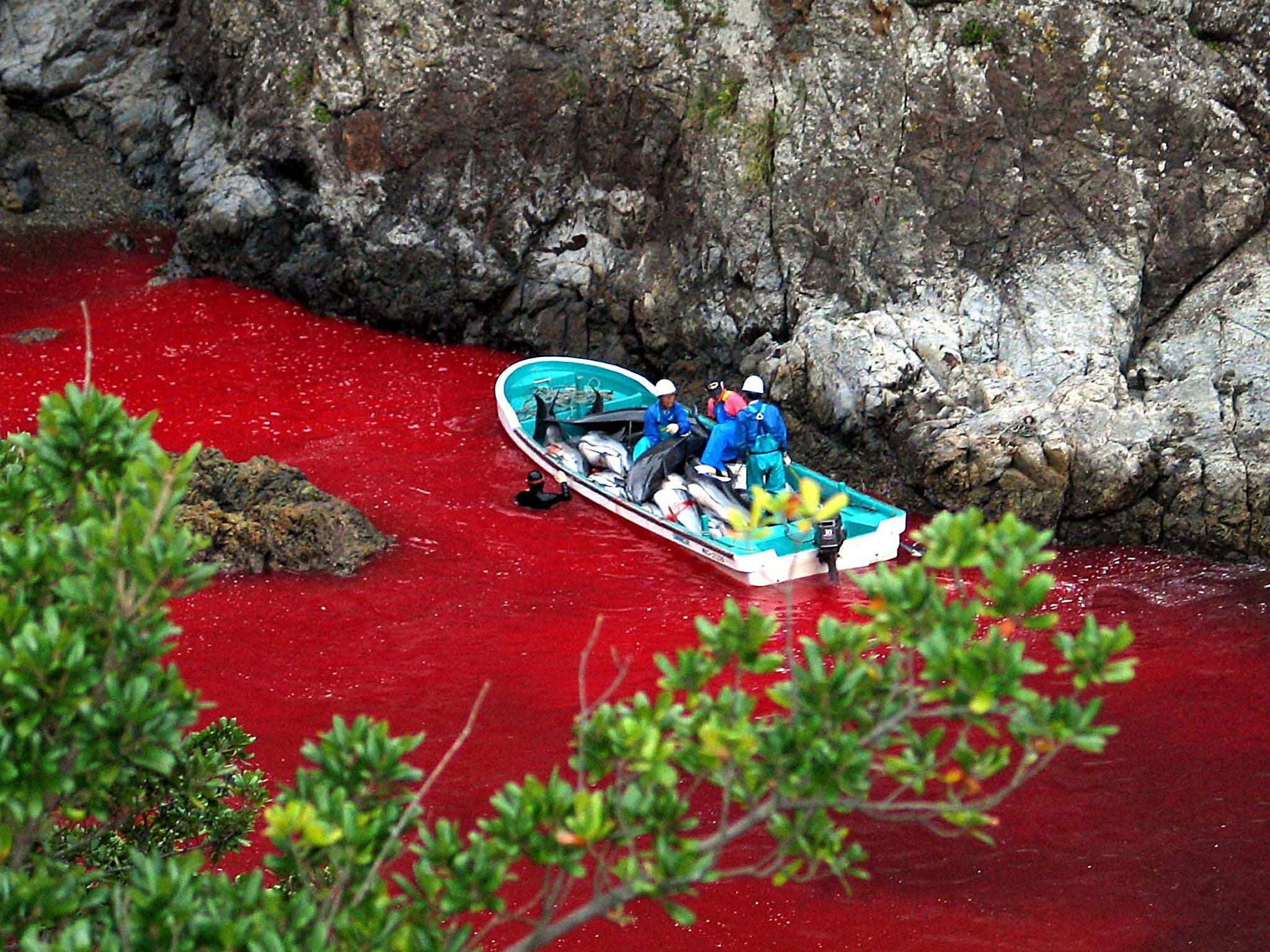Japanese ex-dolphin hunters says Taiji cove slaughter is not centuries-old tradition
Former Taiji hunter is now leading a campaign to end the controversial hunt

Your support helps us to tell the story
From reproductive rights to climate change to Big Tech, The Independent is on the ground when the story is developing. Whether it's investigating the financials of Elon Musk's pro-Trump PAC or producing our latest documentary, 'The A Word', which shines a light on the American women fighting for reproductive rights, we know how important it is to parse out the facts from the messaging.
At such a critical moment in US history, we need reporters on the ground. Your donation allows us to keep sending journalists to speak to both sides of the story.
The Independent is trusted by Americans across the entire political spectrum. And unlike many other quality news outlets, we choose not to lock Americans out of our reporting and analysis with paywalls. We believe quality journalism should be available to everyone, paid for by those who can afford it.
Your support makes all the difference.A Japanese ex-dolphin hunter has disputed government claims that the annual slaughter of dolphins in the Taiji Cove is traditional, centuries-old cultural practice, arguing that the hunting method was first used as recently as 1969.
Izumi Ishii told the Japan Times that his mentors in Futo, Shizuoka Prefecture, taught Taiji fishermen how to conduct dolphin drives in 1969 for the first time.
He said early attempts to capture the dolphins involved methods to amplify underwater sounds, causing the animals to panic - the method used now.
Current Taiji hunting methods involve fishermen on boats surrounding pods of migrating dolphins, lowering metal poles into the sea and banging them to frighten the animals and disrupt their sonar. They are then herded into a nearby cove.
Once the dolphins are herded into the narrow cove, the fishermen attack them with knives, before dragging them to a harbour-side warehouse for slaughter. The best-looking dolphins are separated and sold to aquariums.
In January, Japan’s top government spokesman Yoshihide Suga, defended the controversial cull in the town of Taiji as “lawful”, following international criticism.
Local fishermen defend the hunt as a centuries old local custom, but conservationists consider the hunt slaughter.
Ishii has now teamed up with dolphin activist Ric O’Barry in a joint presentation to a group of Japanese and foreign residents at Temple University’s Azuma Hall in Tokyo.
He told The Times he believed dolphins to be highly intelligent and peaceful animals and became sympathetic towards their plight after hunting them for decades.
Ishii is also fronting a petition to end the hunt, which he will submit to the government’s Fisheries Agency.
Taiji was exposed to worldwide scrutiny four years ago in the Oscar-winning documentary The Cove, which examined Japan’s infamous dolphin hunting culture and the controversial dolphin hunt that takes place in the town between September and April annually. The film won the Academy Award for Best Documentary the following year.
The hunt was condemned by activists and celebrities earlier this year, when figures such as Sean Penn and Gwyneth Paltrow urged US President Barack Obama not to sign an international trade agreement with Japan until the country bans the slaughter of dolphins.
Join our commenting forum
Join thought-provoking conversations, follow other Independent readers and see their replies
Comments